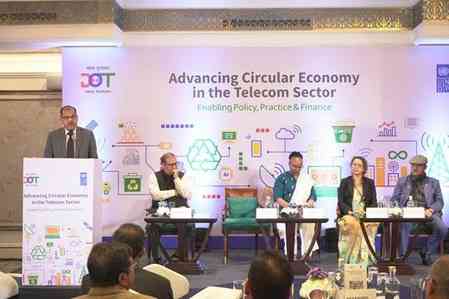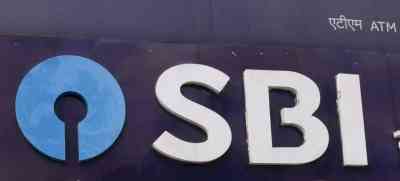RBI hiked repo rate by 50 basis points to 4.90 per cent
The Reserve Bank of India (RBI) on June 8, 2022 hiked the repo rate at which it lends to banks by 50 basis points to 4.90 per cent. Industry has given its reactions on the same.

The Reserve Bank of India (RBI) today (June 8, 2022) hiked the repo rate at which it lends to banks by 50 basis points to 4.90 per cent. Here are the reactions from the Industry:
Dr. Ravi Singh, vice President and head of Research, Share india
“In line with the expectation, RBI has increased the repo rate by 50 basis points and is already discounted by the market. The Ukraine Russia war has led to an increase in inflation globally beyond tolerance level and is effecting the economic growth. However, most of the industries are already facing headwinds due to steep increase in raw materials cost and fuel prices, and a hike in the rates will further increase the burden. The Fed is also increasing the rate so there is major possibility that apart from equity market, other markets like debt market and bond market may see some outflow anytime soon.
Auto, Real estate, Banking and infrastructure stocks would be worst hit by the rate hike as loan financing is a major part of these sectors. FMCG, Insurance, Energy, Power and Utility sectors provides a cushion against rising interest rates.”
Atul Goel, MD, Goel Ganga Group
“RBI’s recent step to increase the repo rate by 50 basis points has been on the expected lines. To curb inflation, the regulatory bodies in India were required to control liquidity circulation in the economy. For a few months, the inflation rate has been above 6%, which is beyond the RBI’s safe zone. If not controlled, the inflationary pressure could destabilize an otherwise bullish Indian economy. Although the recent step will increase the home loan rates, an unstable economy is not conducive to the overall health of the real estate industry. For the industry to operate optimally, it is important that the economy continues to grow in a stable, inclusive, and steady fashion.”
Amit Gupta, MD, SAG Infotech
“In our view the recent proposal of linking Credit cars with UPI is a very good way to boost economy means that every person who would want to do a transactions even with no disposable income at the moment can purchase certain item of his desire, be it small grocery or everyday essentials, making a much convenient life for citizens. Initially rupay credit cards will offer a insight on how the linking will perform and talking about the charges of credit card after 45 days, it may be same as earlier albeit increasing the volume of calculations on the banks side.”
Manoj Dalmia, founder and director Proficient equities Private limited
“RBI has raised the repo rate by 40bps to 4.9% , the inflation projection for this fiscal is 6.7% and will remain above the tolerance band of 2-6% for three quarters in this fiscal, RBI is still expects the economy to grow at a rate of 7.2% .
The SDF and MSF have been increased to 4.65% and 5.15% respectively, RBI is expected to reduce liquidity, reinforcing its fight against inflation and extending its effort to return monetary conditions.
The cost of lending for banks is set to go up due to an increase in repo rate ,retail loans will face direct impact due to this.”
Suren Goyal, Partner, RPS Group
“We welcome the step of the apex body to increase the overall repo rates by another 50 basis points. This will help in clamping down inflation and smoothen economic growth. A rise in inflation can soften the stance on an otherwise robust real estate industry. Already raw material prices are increasing and an unbridled rate of inflation will further drive the input costs northwards, therefore resulting in cost overruns for the developer fraternity. In such a case they will have no option but to pass on the price to the homebuyers. Meanwhile, the government should also take concentrated efforts to reduce the spike in prices of raw materials such as cement, bricks, steel, etc. This will also give some relief to the sector.”
Ravi Singhal, Vice Chairman, GCL securities Limited
“Inflation target increased from 5.7 percent to 6.7 percent, exceeding the RBI's target of 4 percent; repo rate increased by.50 basis point; and CRR remains positive for banking. The inflation target is for fiscal year 23.”
Ridhima Kansal, Director, Rosemoore
“The lowering of the repo rate will ease the economy, control inflation, and set the stage for more sustainable growth. All these three parameters are greatly needed for retail sales to succeed in a vast country like India. The rate of inflation has been beyond the safe limit of 6% over the past few months and such a step was needed. A low-interest regime had to be altered toward a more holistic growth paradigm. Meanwhile, an overall robust economy will continue to drive retail sales in India, despite personal home finances becoming a little dearer. The job market is booming, e-commerce growing rapidly, and malls & shopping centres have resumed. This is a great sign for the retail industry in general. The current fiscal is the year, the industry was waiting for a while.”
Abheek Barua, Chief Economist, HDFC Bank
“Today’s monetary policy announcement was aggressive and moves beyond just “frontloading” of interest rates increases. The central bank seemed far more concerned about inflation --- reflected in its upward revision in its inflation forecast by 100bps to 6.7%—and relatively more sanguine on domestic growth impulses.
Clearly the RBI is concerned about the broad-based nature of the increase in inflation and the risk of the second-round impact on inflation expectations. Therefore, the policy rate is likely to be raised well beyond the pre-pandemic level, close to 6% by fiscal year-end.
Bond yields saw an initial relief rally post the policy announcement as the rate hike was broadly priced-in and the fear of a larger rate increase or a CRR hike has been alleviated. That said, with elevated oil prices and rising global yields, this rally is likely to be short-lived and yields could march north yet again.”
Anjana Potti, Partner, J Sagar Associates (JSA)
“With the retail inflation at 7.79% for April 2022, highest since May, 2014, the recent statements from the Governor, and signals from other major central banks, the hike does not come as a surprise. The only question that remained was how much of an increase in the short term would address this. In the April MPC, the RBI had attempted to buttress economic recovery by maintaining status quo on the rates, only to increase the rates and the cash reserve ratio, through an off-cycle MPC, to control the galloping inflation. The RBI is fighting an uphill battle in the current geo-political situation to keep the inflation below the benchmark of 6%, which it has missed for the past four quarters. We can expect further jumps in the in the next few quarters. The recent off-cycle hike has had an impact on the housing sector which had started picking up after two years of a lull, and this increase is going to dampen the spirits of homebuyers. The manufacturing sector will also see a pull back on the numbers as the retail purse strings tighten. An impact on the stock market is also inevitable. In May, after the surprise increase, the markets also saw a sharp downfall with the BSE falling more than 1,400 points and the NSE settling below 16,700, recording a fall of 391 points, leaving investors poorer by almost 6.27 lakh crores. However, one hopes that the investors are better prepared for the increase this time.”
Rajni Thakur, Chief Economist, RBL Bank
“MPC decisions announced this morning- 50 bps hike in policy rates, resetting inflation projections and no change in CRR- were all broadly along the expected lines. Coming right after an inter-policy MPC in May, which kind of spooked the market a bit, RBI choosing to stay predictable this time will help sooth market sentiments. MPC’s CPI projections for FY23 at 6.7% now are more realistic in view of current geo-political uncertainties and their fall outs. However, with multiple risks on price levels driven largely by external factors, the rate hikes will help anchor inflation expectations and impact the actual inflation outcome to a much lesser extent. This also, makes it difficult to gauge a terminal rate level for the cycle, even though, continual rate hike expectations till pre-Covid levels have been firmed up by the fact that Monetary Policy stance has changed from “accommodative with focus on withdrawal of liquidity” to “focus on withdrawal of accommodation”. We now expect a further rate hike of 50 bps in August, taking Repo rates higher than pre-Covid levels, followed by pause to re-access the macro-dynamics and hikes in smaller quantum thereafter pushing year end Repo-rates close to 6% levels.”
Rohan Pawar -CEO of Pinnacle Group
“During the pandemic, the low interest rate regime had boosted the housing demand. RBI’s decision to hike the interest rate again by 50 bps to 4.90 was expected to tackle the tight inflation of the country. The increase of rates could adversely affect housing demand because of increased EMIs and lower eligibility on home loans. This will create an impact on the ongoing growth momentum in the sector in addition to increasing input costs. However, we still believe that preference of homebuyers for owning a home will continue to boost demand.”
Kaushal Agarwal - Chairman, The Guardians Real Estate Advisory
"The RBI's decision to hike the repo rate was aimed at re-anchoring inflation expectation and will eventually result in the strengthening of the economy. An unstable economy is not conducive to the overall health of the real estate industry and therefore, the RBI's approach towards reviving the economy so far has enabled a robust recovery in the real estate sector. The all-time low home loan interest regime boosted the housing demand and helped the economy to get back to the pre-COVID levels. The rise in property prices due to the increased interest rates, metro cess and higher stamp duty has not affected the sales in the past couple of months which proves that there is a genuine demand. The move to hike the repo rate might temporarily limit the growth momentum of the sector but the demand will continue to sustain."
Pritam Chivukula - Co-Founder & Director, Tridhaatu Realty and Treasurer, CREDAI MCHI
"After two years of unchanged repo rate, RBI 's decision to hike the interest rates to tackle the inflation was a no-brainer. The sharp acceleration of rates consecutively for the second time in a short period will have a short-term effect on the sentiment of homebuyers. The interest rates have been the biggest factor in the resurgence for real estate demand in the last two years. We hope that the State Government will step to lighten the homebuyer load by reducing stamp duty and premiums."
Himanshu Jain, VP - Sales, Marketing and CRM, Satellite Developers Private Limited (SDPL)
"The prices of construction materials are already high and the decision of increasing the repo rate will somewhat dent the current demand momentum and add to the woes of developers. However, keeping the current market conditions and inflation in mind, the move by RBI was expected to keep the economy on the track in the current highly volatile scenario. For first-time buyers, acquiring a home is considered as the biggest asset and these short-term decisions are unlikely to have a major impact on a buyer’s decision."
Bhushan Nemlekar, Director, Sumit Woods Limited
"Due to geopolitical conflict, the input costs were already high and now with this rate hike, it will only dampen the spirit of the entire real estate value chain. Cost of borrowing for both developers and buyers will be impacted and this will result in undesired rate hikes across the spectrum. However, we did not see much impact on the buying spree in last couple of months since there are genuine buyers in the market to keep the momentum going."
Jitesh Lalwani - President, HomeSync Real Estate Advisory
"RBI’s decision to hike in policy rates will lead to increase in housing loan interest rates impacting on the EMIs but we are still bullish about the real estate sector. Homebuyers are more concerned over skyrocketing property prices rather than rising interest rates. We are still optimistic about the current growth run for housing demand since we believe that this move may push homebuyers who are still deliberating to seal the deal. However, we urge the Government to take some necessary measures to control the rise in property prices."
Arun Kumar, Head of Research, FundsIndia
“The rate hike of 50 bps was in line with market expectations. With this hike, RBI is closer to bringing the repo rate back to the pre-covid levels of 5.15%. The RBI has clearly acknowledged the inflation risks primarily driven by food and commodity prices and revised its FY23 inflation projection upwards by 100 bps to 6.7% (from 5.7% in the April meeting). The 2% to 6% inflation band is now expected to be breached for three consecutive quarters. Given this context, RBI is expected to front-load its rate hike actions. However, the growth forecast for FY23 remains unchanged at 7.2%. Overall, the focus at the current juncture is clearly on controlling inflation and the government has also joined the RBI in an attempt to contain inflationary pressures in the economy. As bond yields have increased over the last few months (factoring in for a large part of future rate hikes), debt fund yields are becoming more attractive (especially in the 3-5Y duration segments).”
Dr A Sakthivel, President, FIEO
“This was expected looking at the current and evolving macroeconomic situation. I welcome the initiative taken by the Central Bank of the country, as it will not only help in containing inflation but will also support the economic growth process including exports. However, at the same time RBI should ensure that it neither affects the credit flow nor the interest burden on MSMEs especially exporters and if required, the Interest Equalisation Scheme may enhance the support to insulate against any rate hike.
With agencies like IMF, World Bank and WTO already scaling down their global output growth and world trade forecast coupled with disruptions, shortages and escalating prices due to geopolitical tensions and sanctions, steps taken to contain excess liquidity from the system thereby reducing commodity and raw material/input prices, will help the trade and industry in containing their overall cost of production.
As the Indian economy appears capable of sustaining such geopolitical conditions, the decision of hike in repo rate along with the Standing Deposit Facility (SDF) to 4.65 percent, the Marginal Standing Facility (MSF) and the Bank Rate to 5.15 percent, will further help in reducing pressure on demand front. This will help in ensuring adequate liquidity in the system to meet the productive requirements of the economy in support of credit offtake growth.”
Rupesh Nambiar, CFO, Global PayEX
“Governor Shaktikanta Das’s announcement today comes at a pivotal moment for the Indian economy. While his announcement focused on increasing the repo rate by 50 bps focuses on the RBI’s medium-term goal of reining in inflation and balancing risks to India’s economic growth, it is the long-term focus on making the banking, payments, and lending infrastructure more resilient that make the highlight of this announcement. In light of this there are three important policy decisions.
First, is the decision pertaining to the transaction limit on e-mandates for recurring payments. While there are 6.25 crore mandates with Indian merchants, only 3,400 mandates have been secured with international merchants. The RBI’s decision to increase the limit per transaction, from INR 5,000/- to INR 15,0000/-, is going to bring in more international merchants within the fold of the Indian payments infrastructure, and further drive cross-border payments. Second, pertains to the decision to link credit cards, starting with RuPay, to the UPI platform. This must be seen in the context of the fact that an increasing number of countries, such as Nepal and Singapore are linking UPI to their digital payments framework as well. Additionally, credit card spends in April 2022 have increased by 79% y-o-y. In May 2022 itself 2.4 lakh crore transactions were processed via UPI. By linking credit cards as well as the digital payments network of other countries to the UPI platform, we will witness a surge in the number and in the volume of transactions processed. Third, relates to the subsidy claim process under the Payment Infrastructure Development Fund Scheme, which has set the target of increasing adoption of POS, QR codes, and mobile payments across tier 3 to tier 6 cities. This scheme is critical to ensure that a huge chunk of the Indian population is not left out of the burgeoning digital payments infrastructure. By extending, and simplifying the subsidy claim process, the RBI is doubling down on India’s digital payments infrastructure by incentivizing adoption and growth in non-urban areas. This is crucial to increase access to financial services.
In conclusion, the RBI’s policy decisions pertaining to digital payments promise an optimistic future for the Indian payments infrastructure. We believe that central to this future is the growing collaboration between banks and Fintech companies, which will drive the Indian digital payments infrastructure to new heights.”
Atanu Kumar Das, MD & CEO, Bank of India
“Policy announcement is on expected lines, reflecting the Central Banker’s continued focus on a non-disruptive trade off between growth and price stability, in a calibrated manner.”
Dhiraj Relli, MD & CEO, HDFC Securities.
“The outcome of the MPC meet was in line with most of our expectations except that the repo rate hike came in at 50 bps vs 40 bps expected by us.
RBI noted that inflation pressures have intensified and expects inflation to remain above the upper tolerance band of 6% for the first three quarters of FY23. The RBI hiked CPI inflation forecasts by 100bps to 6.7% (vs earlier forecast of 5.7%). The MPC policy actions’ impact on inflation will only materialise after couple of quarters. The RBI governor has hoped for more fiscal measures from the Govt to bring inflation under control faster.
While the real GDP growth projection for FY23 is retained at 7.2% based on the fact that drivers of domestic economic activity are getting stronger, they face headwinds from global spillovers in the form of protracted and intensifying geopolitical tensions, elevated commodity prices, COVID-19 related lockdowns or restrictions in some major economies, slowing external demand and tightening global financial conditions on the back of monetary policy normalisation in advanced economies. This number may come up for some downward revision in the forthcoming MPC meets.
The bond markets and equity markets reacted well to the MPC outcome being relieved that the MPC did not sound more hawkish than most expectations. Absence of a CRR hike also was a relief. Stock prices of rate sensitive sectors including Auto, Banks, Finance, Durables, Realty have reacted well to the MPC outcome due to the above. However, this upmove may need more triggers to continue.
While a revisit of the pre Covid repo rate of 5.15% over the next 1-2 meets is a given (vs 4.90% currently), most economists expect this to go above 5.15%. A lot in this regard will depend on how soon the inflation peaks out and begins to fall and when do the global Central Banks feel that they are done with the rate hikes for now."
Dilip Modi, Founder, Spice Money
“The introduction of RBI’s PIDF Scheme has provided a big boost to financial advancement in India’s semi-urban and rural economy, especially at a time when this segment needed immediate support to jump back into the economy. Testimony to this lies in the RBI announcement today, which states the establishment of 1.18 crore POS, overachieving the target of 90 lakh, in less than one and a half years. We welcome the announcement made today to enhance subsidies and simplifying the subsidy claim process. We believe this will further encourage nanopreneurs across the country to adopt this model, with renewed commitment.
Accessibility and availability of financial services are major challenges that hamper financial inclusion of rural and underserved segment. As a rural fintech platform, Spice Money has been working towards extending digital payment and other financial services by empowering the rural entrepreneurs and Kirana store owners. We are committed to our vision of digitally and financially empowering over 1 crore rural entrepreneurs. With our million-strong Adhikari network, 90% of them already operating in Tier 3 to Tier 6 cities, we are committed to keep supporting this initiative and playing our part in RBI’s endeavour to channelize digital payments pan-India.
Dr. M Sharma, Chief Economist, Infomerics
“In view of the evolving growth-inflation dynamics, the MPC took the right call of hiking the Policy rate by a hefty 50 bps on top of the unscheduled off-policy cycle hike effected in May 2022. This strong measure will certainly help to control persistent inflation to some extent, but it may hurt fragile growth impulses.
The move to expand the lending scope of cooperative banks, which have a legacy and nationwide presence, is highly welcomed. This will not only help state and rural banks in boosting their loan book / enhance their working, but also give a thrust to affordable housing for all, as outlined by Hon’ble PM time and again. Contextually significant.”
Upkar Singh Ahuja, President, CICU, Ludhiana
“Today Reserve Bank of India announced that the repo rates have been hiked by 50 bps. The MSME is already in stress. Interest cost for consumable durable, Two-Wheeler, Cars, Commercial Vehicles, etc of which 95% is sold by financing routes, rate rise will impact demand. Demand in above products is already low compared to previous years. The Market has not recovered and low demand will further effect sale dip for MSME.
MSME is largely dependent on Finances from Banks and other financial institutes. MSME got financial support under Emergency Credit Line Guarantee Scheme (ECLGS) scheme. Rise in Interest rate will adversely affect the MSMEs and the profitability of MSME will be reduced. 60% of MSMEs are already in stress.
CICU suggest the Government rather than reducing demand by raising price price, it must take steps to increase output. Prices will automatically come down due to market completion and economy of Scale.
CICU in its letter to Union Finance Minister Nirmala Sitharaman and Minister of Commerce & Industry Piyush Goyal urge that it will create more burden on MSMEs and it should be reduced to save the industry.”
Swapnil Bhaskar, Head of Strategy, Niyo
‘’Over the past few years, UPI has become the most inclusive mode of payment and is the most popular way Indians transact money. RBI’s recent move of linking credit cards with UPI accounts is a major shift in how the unified payments interface functions. Linking of credit card with UPI will surely increase the usage of credit card in small ticket size payment since it will provide users with more options to chose as their mode of payment. Linking of credit card to UPI was always anticipated and it will certainly expand the footprints of digital payments in India.’’
Neeraj Dhawan, Managing Director, Experian India
“The Reserve Bank of India has hiked the policy repo by 50 basis points with immediate effect, taking the rate to 4.9 percent, in order to keep inflation within the target limits.
Significantly, the central bank announced steps to enhance digital payments and boost the credit eco-system by allowing customers to link their credit cards to transact through the UPI platform, improving customer convenience. UPI has become a widely used mode of payment in India and currently facilitates around 595 crore transactions in a month amounting to Rs 10 lakh crore only by linking savings and current accounts through debit cards.
Another key step was doubling the limit on housing loans from cooperative banks and permitting Rural Cooperative Banks (RCB) to finance residential real estate projects to support affordable housing and inclusive growth.”
Saurabh Puri, Chief Business Officer - Credit Cards, Zaggle
“UPI is one of the biggest success stories in India and RBI’s announcement of linking RuPay credit cards with UPI is a progressive move to catalyze digital payments in the country. A lot of small value transactions that are happening today will now automatically come under the purview of credit cards, which is one big advantage to grow the volume of cards and also increase the overall coverage. There is now also a huge convenience factor for the customers because UPI is a frictionless way of transacting. It is still not clear how the Merchant Discount Rate (MDR) will be applied for UPI transactions linked to credit cards.”
Akash Sinha, CEO and Co-Founder, Cashfree Payments
"We welcome the RBI's move to allow credit cards (starting with Rupay) to be linked to the UPI accounts. This is an important step for enabling credit payments via UPI, which until now was only possible through linking overdraft accounts. Other options included linking savings and current accounts to UPI via debit cards/ Aadhaar. We believe that this will significantly contribute to the Digital India imperative. In May 2022, UPI processed more than Rs. 10 trillion worth of transactions, witnessing a doubled volume and value of transactions in a year's time. Cashfree Payments is a certified and compliant payments solutions provider and we believe in an inclusive nature of services and products which also resonates with UPI operations. The central bank's announcement is well-timed and provides us with an added encouragement to continue our efforts to assist the payments industry accelerate the digitalization journey and promote financial inclusion."
Gaurav Chopra, CEO, IndiaLends
“Credit cards serve two primary purposes: convenient payments and short term liquidity. Keeping that view, enabling UPI for credit cards is a logical and welcome step. UPI has already proven its utility by its widespread adoption, and bringing the same convenience to access credit can be a watershed moment for credit penetration in India. Today, UPI is practically omnipresent, and I do not doubt that UPI enabled credit cards will foster the next phase of credit backed growth for hundreds of millions in our country.”
Kumar Shekhar, VP Member Operations, Tide (IN), a UK-based fintech
“The RBI Governor announcing the linkage of credit cards to UPI accounts is indicative of a major shift in how UPI will operate and function. Considering that the announcement comes at a time when UPI has become the most inclusive mode of payment in India, with over 26 crore unique users and 5 crore merchants on the platform, this new arrangement will offer added convenience to users and enable them to seamlessly track their spending. But more than that it will boost India’s digital payment and e-wallet ecosystem while attracting more stringent security measures, such as two-factor authentication. Amidst this, it will also be interesting to watch the application of Merchant Discount Rate (MDR) to UPI transactions. As of now, RuPay and UPI have a zero MDR policy and the merchant does not have to pay any transaction amount. This is a key factor for the massive adoption of UPI. However, credit cards work on a completely different model and have the highest MDR. While more clarity will be required from the central bank on this, the move will definitely increase the market share of the most preferred mode of payment, UPI, which currently stands at 56%.”
Kaushal Agarwal - Chairman, The Guardians Real Estate Advisory
"The RBI's decision to hike the repo rate was aimed at re-anchoring inflation expectation and will eventually result in the strengthening of the economy. An unstable economy is not conducive to the overall health of the real estate industry and therefore, the RBI's approach towards reviving the economy so far has enabled a robust recovery in the real estate sector. The all-time low home loan interest regime boosted the housing demand and helped the economy to get back to the pre-COVID levels. The rise in property prices due to the increased interest rates, metro cess and higher stamp duty has not affected the sales in the past couple of months which proves that there is a genuine demand. The move to hike the repo rate might temporarily limit the growth momentum of the sector but the demand will continue to sustain."
Pritam Chivukula - Co-Founder & Director, Tridhaatu Realty and Treasurer, CREDAI MCHI
"After two years of unchanged repo rate, RBI 's decision to hike the interest rates to tackle the inflation was a no-brainer. The sharp acceleration of rates consecutively for the second time in a short period will have a short-term effect on the sentiment of homebuyers. The interest rates have been the biggest factor in the resurgence for real estate demand in the last two years. We hope that the State Government will step to lighten the homebuyer load by reducing stamp duty and premiums."
Himanshu Jain, VP - Sales, Marketing and CRM, Satellite Developers Private Limited (SDPL)
"The prices of construction materials are already high and the decision of increasing the repo rate will somewhat dent the current demand momentum and add to the woes of developers. However, keeping the current market conditions and inflation in mind, the move by RBI was expected to keep the economy on the track in the current highly volatile scenario. For first-time buyers, acquiring a home is considered as the biggest asset and these short-term decisions are unlikely to have a major impact on a buyer’s decision."
Jitrendra Shah, CEO, Rockford Group
"RBI’s decision to hike the repo rate was anticipated to keep the inflationary expectations under check. From the real estate perspective, this move will impact the overall growth of the industry by dampening sales momentum while property prices are already on rise. However, we believe that this may also encourage the fence-sitters to make the most of the current schemes offered by developers in the market and take the plunge."
Shraddha Kedia-Agarwal, Director, Transcon Developers
“The recent announcement by the Reserve Bank of India on increasing the repo rate by 50 bps, bringing them to 4.90%, will affect the real estate sector to an extent. Banks will soon likely to increase the home loans that will directly impact the consumer’s buying behaviour. The real estate industry was expecting this move owing to tackle the tight inflation of the country. However, we believe that preference for owning a home by homebuyers and strong wage growth will continue to support the housing market.’’
Dr. Sachin Chopda, Managing Director, Pushpam Group
"RBI's decision to hike the policy repo rate by 50 basis points was anticipated, factoring the rise in inflation. The rate hike is likely to shrink liquidity in the economy overall, especially impacting the investor’s sentiments. There will be a short-term pause on the minds of the investors while assessing the volatility of the current market dynamics. However, they are bound to return soon in the market once the normalcy is bounced back."
Bhushan Nemlekar, Director, Sumit Woods Limited
"Due to geopolitical conflict, the input costs were already high and now with this rate hike, it will only dampen the spirit of the entire real estate value chain. Cost of borrowing for both developers and buyers will be impacted and this will result in undesired rate hikes across the spectrum. However, we did not see much impact on the buying spree in the last couple of months since there are genuine buyers in the market to keep the momentum going."
Jitesh Lalwani - President, HomeSync Real Estate Advisory
"RBI’s decision to hike in policy rates will lead to increase in housing loan interest rates impacting on the EMIs but we are still bullish about the real estate sector. Homebuyers are more concerned over skyrocketing property prices rather than rising interest rates. We are still optimistic about the current growth run for housing demand since we believe that this move may push homebuyers who are still deliberating to seal the deal. However, we urge the Government to take some necessary measures to control the rise in property prices."
Shrihari Gokhale, COO, Lentra AI
“While the MPC voted unanimously to increase the policy repo rate by 50 basis points to 4.90 percent, it is important to take into consideration that RBI has three broad mandates besides inflation – one is supporting growth, the other is assessing the government’s borrowings, and finally maintaining the payment and settlement system. And most important they have to balance all these. Today we are seeing that the inflation targeting seems to be slightly misaligned with growth while being a critical contributor to it. But it is critical to understand that RBI slashed the repo rate in 2020 to cushion the impact of COVID and now the focus is back on regulating inflation. So, as the governor mentioned, we will have some ups and downs, and external influencers, such as crude oil, metals, and food in some cases, which are not in RBI’s control will also have a considerable impact. At this point, RBI will require all its skill and commitment to keep inflation and inflationary expectations under check. And if external forces are controlled to some extent, we may see moderation going forward.
From a lending perspective, this will certainly cause a rate hike in deposits and an immediate impact on retail loans. The overall increase in the cost of funds will definitely impact the overall feasibility of large and long gestation projects. On the other hand, MSMEs that are still recovering from the two years of uncertainty, require assurance of funds rather than cost alone. We believe, they will be able to handle this surge in repo rate, as long as it stays in this range over the medium term.”
Deepti Sanghi, Co-Founder and CEO, Kodo
“The announcement by RBI on linking UPI platforms with credit cards is indeed a welcome move. UPI is increasingly becoming one of the most favoured payment alternatives for consumers transacting online; with Rs. 594.6 crore transactions amounting to Rs 10.40 lakh crore in the month of May 2022 alone. RBI has offered a lucrative solution of synchronising credit cards on UPI platforms, this move will encourage the reach and utility of both credit cards and UPI. The acceptance infrastructure for credit cards can dramatically increase as merchants will be able accept credit card payments over their UPI accounts. A number of our corporate card customers have requested for the ability to link their cards to UPI to be able to make all kinds of payments related to their company expenses seamlessly.
However, since there is no MDR charged to merchants for UPI payments, there is an open question of how will the credit card issuers cover their cost of capital and how will the underlying infrastructure support this. We are confident that the RBI, the banks and the NPCI will collaboratively formulate a directive, keeping all essential factors in mind.”


 City Air News
City Air News 











